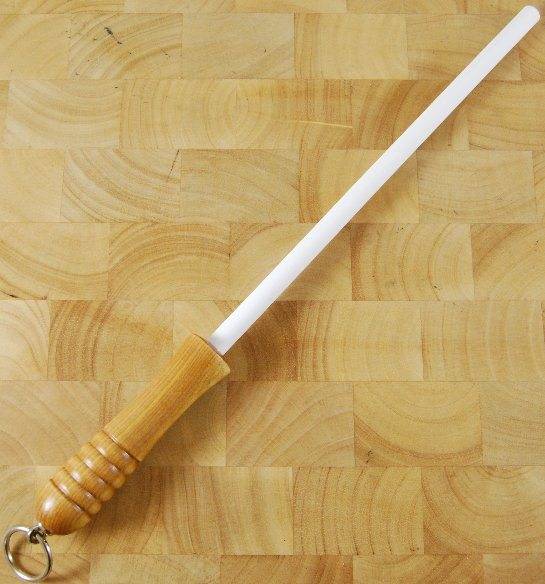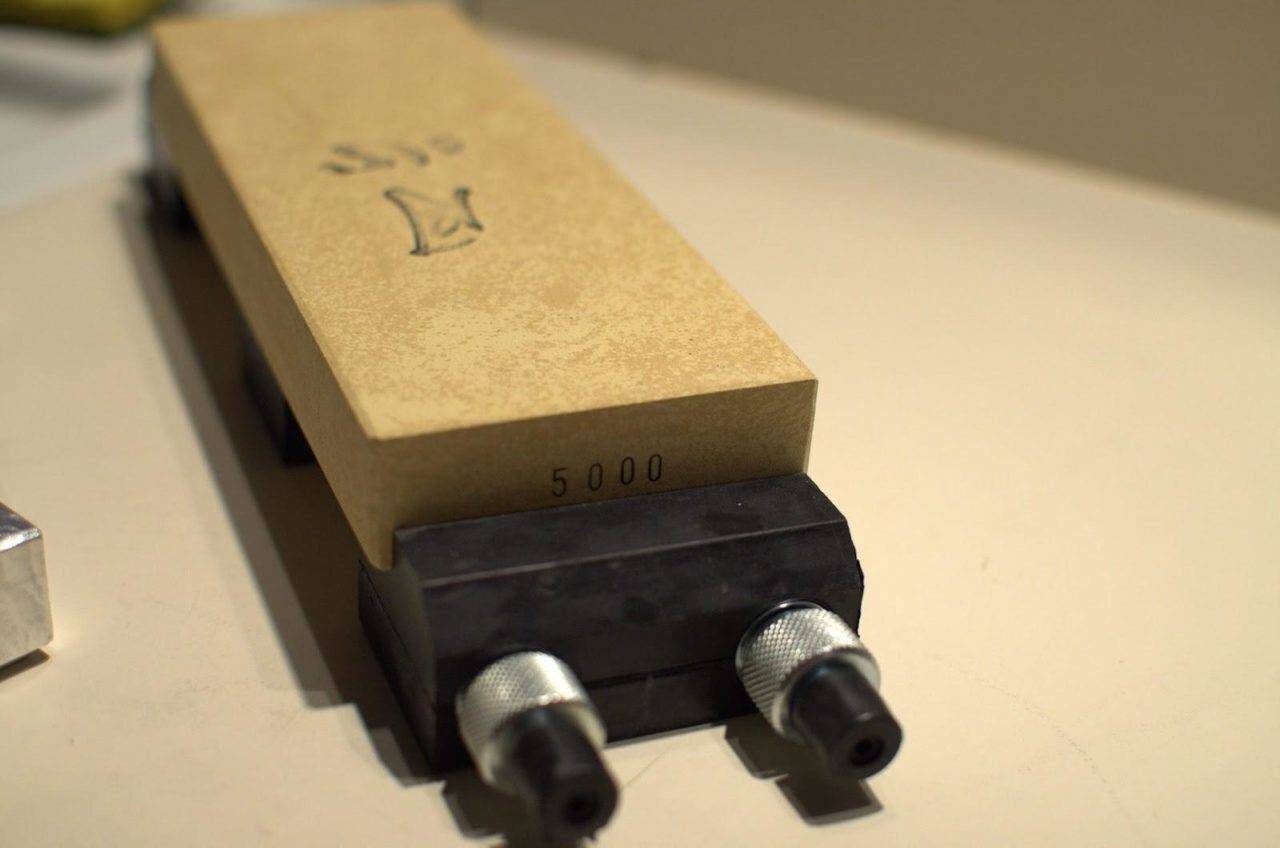Knife Sharpening
Staying Edgy: Knife Maintenance Between Sharpenings
17.12.2014
An edge, if it was sharpened correctly is a clean crisp apex where the two sides of the knife meet, forming an angle. That’s what we try to maintain along the length of the knife for good cutting performance. This article outlines good practices in maintaining an edge, and options to restore that clean edge in between full on sharpening sessions.
After your knife has been sharpened, you can follow some basic guidelines to keep it that way.
- Do the appropriate cutting tasks for your knife. Have a nice, light, japanese gyuto? Don’t hack through bones; use a meat cleaver or bonesaw or cut around bones with a boning knife. German chef’s knives might go through small chicken bones, as will a western deba.
- Use a quality cutting board. End grain wood is best, followed by edge grain wood, and then plastic or rubber. In many commercial kitchens, you’re not allowed wooden boards because they can’t be easily sanitized, so you need to use a rubber or plastic board. Never use glass! Glass boards are a good way to roll your edge, chip your knife, or otherwise increase the need to sharpen. Bamboo is surprisingly bad, since it is a hard grass, not a wood. The amount of hard glue used to bind the pieces together is actually hard on your edge.
- Avoid rocking. Unless you have a soft steel german knife, rock chopping or walking your knife along the board is a bad idea. If some part of your edge tip gets caught on the board and you twist it side to side, you risk chipping or rolling the edge depending on the knife.
- Store your knife safely. Use a knife block, wooden drawer inserts, a magnetic bar on the wall, or a knife stand. If you have a magnetic bar that has exposed metal, be extra careful when you place or remove a knife. Having the edge slam into the magnet bar is not ideal. I like to put the spine on first, then roll the knife over slowly. When lifting it off, I roll the knife onto the spine then lift. If you store your knives in a drawer, use an edge guard or a saya to protect the edge from collision with other utensils.
If you follow all of those basic guidelines, your edge will last much longer in between sharpenings. However, there are some tools that can keep your knife in tip top shape.

STEEL HONING RODS
 Shun steel honing rod
Shun steel honing rod
These can be used on soft steeled French and German style knives only! Keep this away from your Japanese knives. In normal usage, the edge on a western knife made from softer steel will “roll” or bend. This will make the knife feel duller. A steel honing rod can be used to re-align the edge. Steeling has diminishing returns; the more you use it, the more often you’re going to use it, until the steel fatigues to the point where your knife no longer holds an edge and you need to sharpen to reveal a fresh edge. Ignore those celebrity chefs and culinary school instructors that tell you to steel your knife every time you use it. You can steel when your knife feels dull, and when this stops being effective, it’s time to hit the stones. Over use of the steel honing rod is more hurtful than helpful. All you need is a few swipes with light pressure at the same angle as your edge. Get the longest one you can find, 12” is good, because you want to get the entire knife in one stroke. For a chefs knife, you really need a 12”+ rod.
Again, this does not apply to Japanese knives whose knife steels are typically made and heat treated to be harder. These harder knife edges will not roll. They’ll stay straight and if you use them poorly, they’ll chip before they bend. In addition to not helping, steeling a Japanese knife can even damage your knife. The harder steels are more brittle and do not like pressure from the side. As the negation of Nike’s slogan would say, ‘Just don’t do it.’

CERAMIC OR DIAMOND HONING RODS

Idahone Fine Ceramic Rod 12”
Same shape as the steel rods, but these are ceramic. The difference from a steel honing rod is that you’re not just trying to align the edge, you’re abrading away some metal. These are safe on double bevel Japanese knives in a pinch, but I much prefer to just using my fine grit water stones because it is easier to get even pressure. If you need something for touch ups that fits easily in your knife roll though, this is it. I have two warnings about ceramic rods, it will shatter if dropped, and don’t apply too much pressure because you’re already getting a lot of pressure on one small point of your edge.

STROPPING

Richmond 2 piece strop set. Magnetic base and magnetic backed horse butt strop to be used loaded or unloaded.
I use stropping sometimes to polish the edge. You could strop on newspaper, where the ink has some fine abrasives, cardboard, balsa wood, or leather. You can strop on these unloaded or with different stropping compounds which have different sizes of abrasives. Stropping is done with an edge trailing stroke. Hold your knife at the correct angle for your edge and push the knife away from the edge. The other direction will cut into your strop.

JAPANESE WATERSTONES

Gesshin 5k splash and go. My favorite touch up stone for double bevel knives.
This is my preferred method of touch ups. Fast, even, no mess. This is really the same as the last few steps I would use for sharpening. On a knife with no chips or repairs necessary, with a bevel angle that I’ve already set, I would start sharpening at 1000 grit and work my way up to higher grit levels. For touch ups, I’ll start at 5000 grit. Most stones at high grit level are splash and go, so there’s no soaking time involved. You can read more about choosing the appropriate waterstones here.
CONCLUSION
If the above methods stop being effective, it is time for real sharpening. You need to abrade away metal, revealing a fresh edge that comes to a sharp point. Read my article on the different options for sharpening. Even if you don’t plan to sharpen yourself, you will know what you’re paying for at different professional sharpeners.









